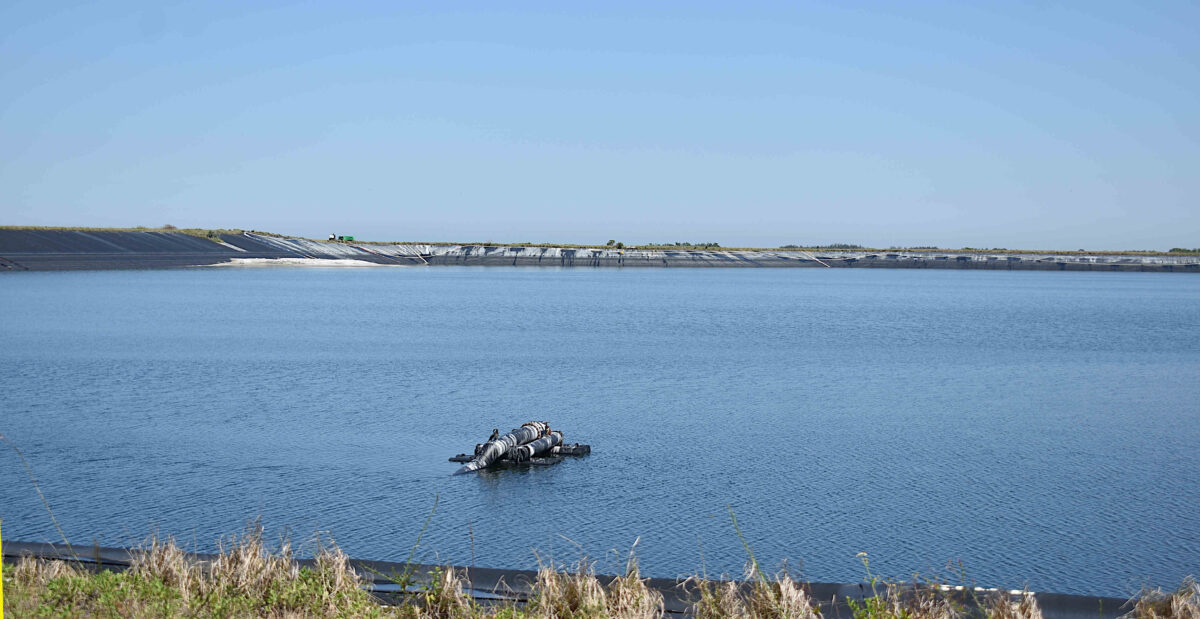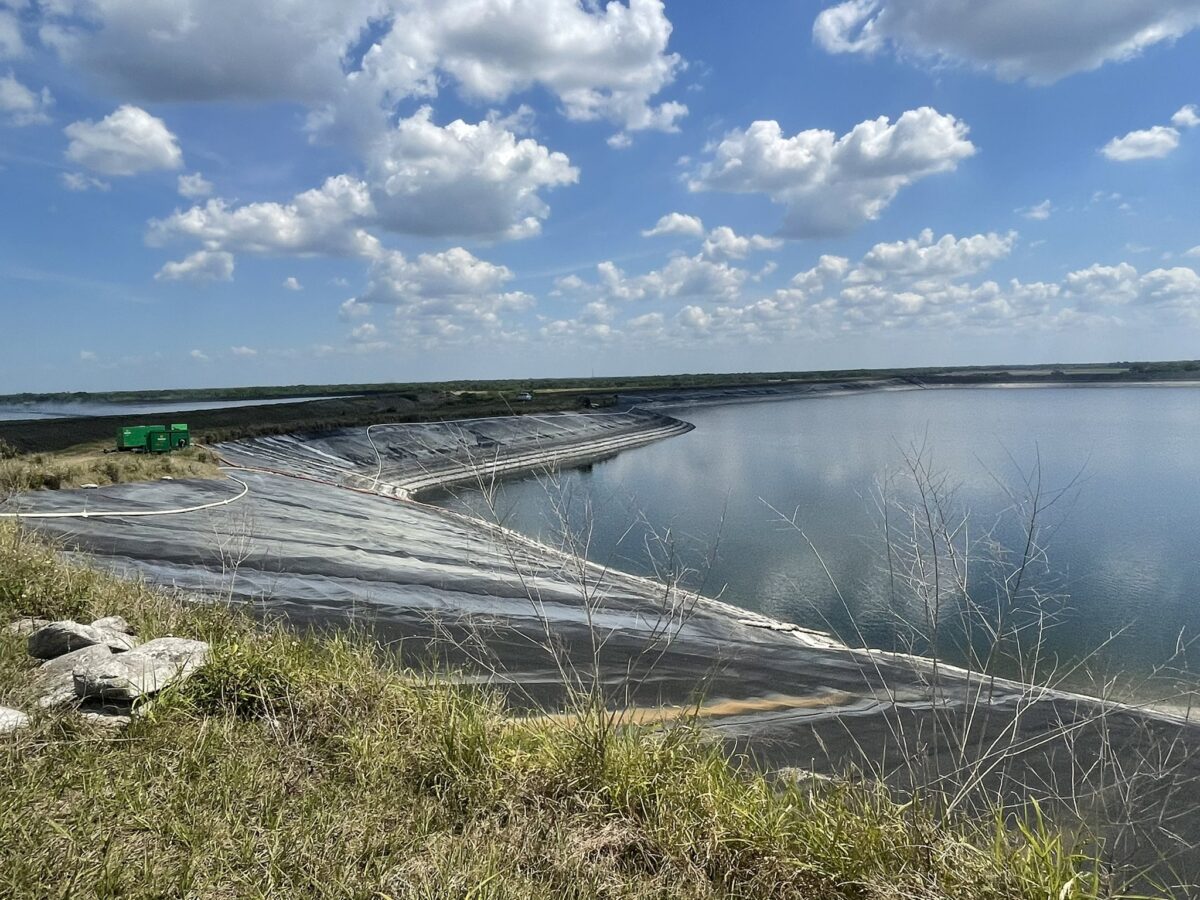ST. PETERSBURG — Conservation groups filed a lawsuit Wednesday, June 24, against Florida Governor Ron DeSantis, the acting secretary of the Florida Department of Environmental Protection, HRK Holdings, LLC and the Manatee County Port Authority for the release of hundreds of tons of hazardous pollutants into Tampa Bay and groundwater.
The lawsuit was announced in an email distributed by Suncoast Waterkeeper founder and Vice Chair Justin Bloom.
Here is a link to the lawsuit complaint: https://thesunshinegazette.com/wp-content/uploads/2021/06/Piney-Point-Lawsuit-Complaint-6-24-21.pdf
Lawsuit press release
The following press released was issued on Wednesday:
The toxic releases endanger the public, marine ecosystems and protected species, according to the lawsuit filed in the U.S. District Court in the Middle District of Florida.
The lawsuit comes after Florida regulators authorized the discharge of up to 480 million gallons of wastewater from the Piney Point phosphogypsum stack into Tampa Bay following years of regulatory failures and mismanagement. The Piney Point gypstack is a mountain of toxic waste, topped by an impoundment of hundreds of millions of gallons of process wastewater, stormwater and tons of dredged spoil from Port Manatee.
“The Piney Point disaster is Exhibit A in a long list of Florida’s failures to protect our water and wildlife from the harms of phosphogypsum,” said Jaclyn Lopez, Florida director at the Center for Biological Diversity. “Even as state officials scramble to clean up Piney Point, they have drafted a permit to authorize a 230-acre expansion of the sinkhole-prone New Wales gypstack that leaked 215 million gallons of wastewater into the Floridan aquifer.”
“Piney Point was and still is a ticking timebomb,” said Justin Bloom, Suncoast Waterkeeper founder and board member. “Rather than closing it when they had the chance, FDEP allowed the site to become even more dangerous, knowing full well the risk of collapse and catastrophic contamination.
Now Manatee County is seeking to inject the hundreds of millions of gallons of remaining hazardous wastewater into our groundwater. We’re not confident in our regulators’ ability to manage this mess and this legal action is necessary to protect our communities and waterways from further harm.”
According to the lawsuit, Piney Point is an ongoing threat to public health and the environment due to:
1. The discharge of 215 million gallons of toxic wastewater into Tampa Bay, which is now experiencing harmful algae blooms and fish kills;
2. The threat of catastrophic failure of its impoundments and/or stack system;
3. The site’s failing liners;
4. Violations of groundwater-quality standards and evidence that dangerous levels of pollution have migrated into the aquifer; and
5. The choice of an unproven and high-risk wastewater disposal method called deep-well injection to store hazardous waste at Piney Point.
“Recent events at the abandoned Piney Point phosphate plant clearly demonstrate that not enough is being done to safeguard the public or the environment from the devastating impacts that the phosphate industry is having on Florida,” said Glenn Compton, chairman of ManaSota-88, Inc. “Piney Point represents the true legacy the phosphate industry will leave behind. There is no economically feasible or environmentally sound way to close an abandoned gyp stack. This legacy includes the perpetual spending of taxpayer monies and risks to the public’s health and the environment.”
Piney Point was a problematic phosphate fertilizer plant that the Florida Department of Environmental Protection turned into a disposal site for dredge material. After the owner went bankrupt and abandoned the property, the department owned and operated Piney Point from 2001 to 2004. The agency oversaw the installation of inadequate liners and approved the use of the site for dredged material storage, despite knowing the Piney Point gypstacks were at risk of failure due to foundation settling and other problems.
Florida regulators ignored the U.S. Army Corps of Engineers’ advice to reject the dredge proposal because of the gypstacks’ structural uncertainties, the hazardous and toxic material in the stacks, and documented past slope stability and piping issues.
“Lawsuits like this shouldn’t be necessary, especially in Florida where so much of the state’s economy and residents’ quality of life are dependent on healthy water quality,” said Annie Beaman, co-executive director of Our Children’s Earth Foundation. “State and local regulators have failed the public for decades and continue to mismanage the waste generated by the phosphate industry. We resort to federal court oversight when decisions by the political branches of government endanger the public. Enforcing basic environmental standards with citizen suits is the best option we have to ensure a healthier future for Tampa Bay, its communities and its wildlife.”
The 215 million gallons of wastewater dumped into Tampa Bay continue to spread throughout the estuary and into Sarasota Bay, transporting tons of nitrogen and other pollutants into waterways and communities. Many of those areas are already struggling to manage excessive pollution that has reduced water quality and fueled the growth of toxic algae blooms that kill seagrasses and other marine life.
Hillsborough County recently issued a public health advisory because of a red tide bloom near Piney Point; fish kills associated with red tide have been reported in recent weeks in Hillsborough, Manatee and Pinellas counties. Manatee County is suffering from an unprecedented algae bloom that is believed to be fueled in part by the nutrients dumped into the bay from Piney Point.
The fertilizer industry creates more than 30 million tons of phosphogypsum in Florida each year. Phosphogypsum is radioactive and can contain uranium, thorium and radium, which decay into carcinogenic radon. In addition to these radioactive carcinogens, phosphogypsum and process water can contain heavy toxic metals like antimony, arsenic, barium, cadmium, chromium, copper, fluoride, lead, mercury, nickel, silver, sulfur, thallium and zinc. This waste is stored in mountainous piles called gypstacks that are hundreds of acres wide and hundreds of feet tall. Florida has 1 billion tons of radioactive phosphogypsum in 25 stacks, including the Piney Point gypstack and the New Wales gypstack.
The Florida Department of Environmental Protection has drafted a permit approving a 230-acre expansion of the New Wales gypstack. The stacks are perched precariously atop the Floridan aquifer, which supplies drinking water to 10 million people. Both active and inactive gypstacks have impoundments of process wastewater sitting atop the mountain of waste.
The groups involved in the lawsuit – the Center for Biological Diversity, Tampa Bay Waterkeeper, Suncoast Waterkeeper, ManaSota-88 and Our Children’s Earth Foundation – are represented by the Law Offices of Charles M. Tebbutt, P.C.


